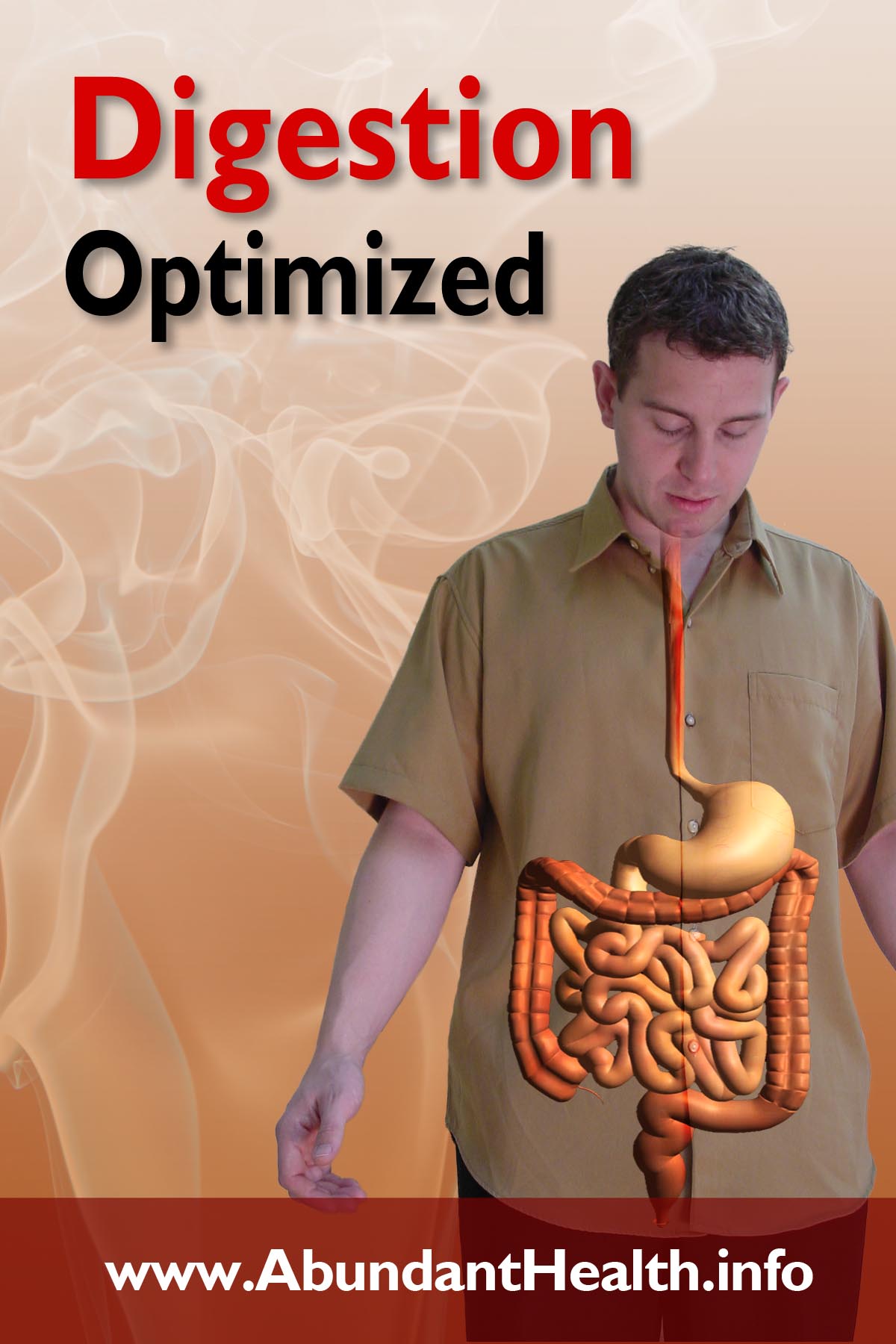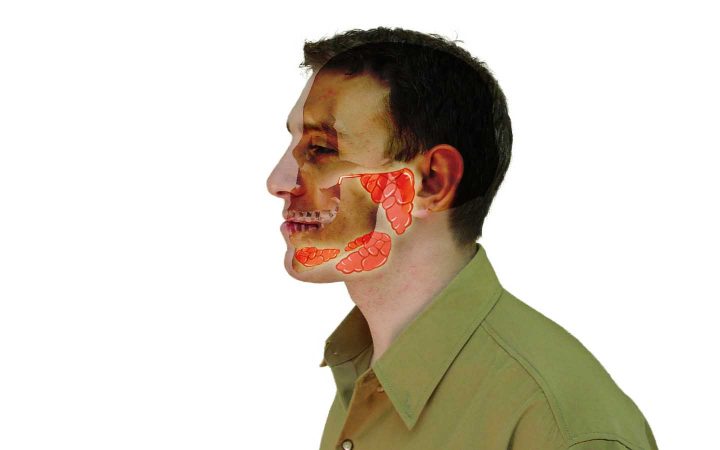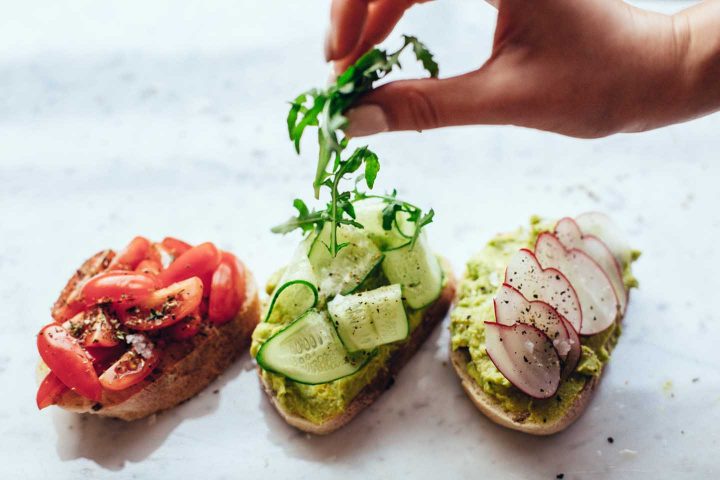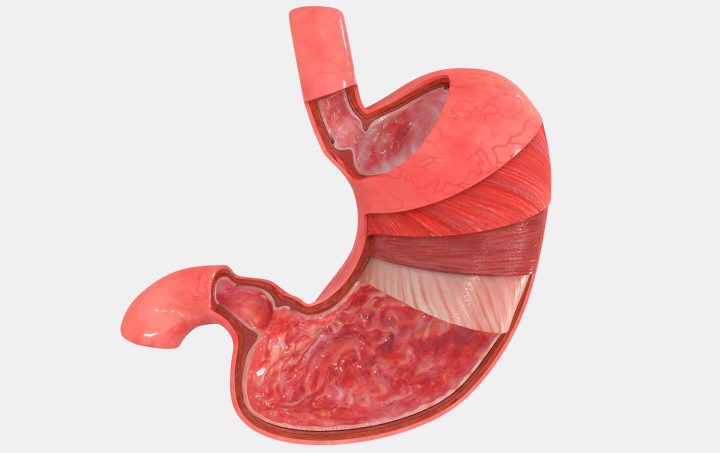Most people’s hair stands on end when they hear the word chemistry. Be it because of the many negative media reports about chemical accidents or because of the boring, almost incomprehensible chemistry lessons that they are actively trying to forget. However, chemistry is extremely exciting. And in our digestive tract, there is so much chemistry going on from the mouth to the anus!

We could not exist without chemical processes. And the best thing is that it runs on auto pilot without any programming on our part. However, we can still support the digestive processes, so that they are happening the way they are intended to be.
Let’s take a look at our digestive tract. To put it simply, it is a tube from the mouth to the anus with sections of different widths. In terms of structure, all sections are similar. However, there are significant differences in the fine tissues. And by adding coordinated secretions, they fulfill very special functions. Digestion breaks down the nutrients contained in food, until they can be absorbed through the intestinal wall. They are transported with the bloodstream to various organs, where they perform their important tasks and generate energy.
The digestive organs include the oral cavity with dentition, tongue and salivary glands, pharynx, esophagus, stomach, intestines, liver with bile ducts and pancreas.
Digestion Starts in Your Mouth
When we take a bite of our meal, digestion begins right in the mouth. The teeth work to break down food and prepare it for digestion. At the same time, the resulting pulp is insalivated and the alpha-amylase contained in the saliva begins the process of splitting the carbohydrates. If we chew a piece of bread long enough, it will start to taste sweet because the long chain starch molecules are broken down into glucose, providing energy for our body.

But if we choke down our food and wash it down with a soda, these processes don’t take place. Unfortunately, the stomach doesn’t have teeth to handle the unfinished work with the same efficiency. If you have not yet created the habit of chewing, you should try to chew every bite 20-30 times. You can count along for a while until thorough chewing becomes your second nature.
Dwell Times
The length of time spent in the individual sections varies from person to person and depends heavily on the composition of the food. The esophagus itself is approximately 10 inch (25 cm) long. It takes about 10 seconds for a bite to slip through this tube and arrive in the stomach. The food stays here for an average of 1-4 hours. The dwell time of carbohydrate is shorter than that of protein. High-fat foods stay in the stomach the longest; a fatty roast up to eight hours, and sardines in oil up to nine hours. That is why you should be using fat in your diet rather sparingly.
It is good if we give our stomach a break at night. Therefore, the last meal should be taken no later than 3 hours before bedtime and should be easily digestible. Therefore the meal should consist mainly of carbohydrates and you should avoid fats as much as possible. A fruit with a piece of toast or a rusk bread would be an optimal option for dinner.

The emptying times of the small intestine is about 5-9 hours, of the colon is 25-30 hours and close to the rectal area feces can sometimes stay another 30-120 hours. Now we understand why colon cancer is appearing commonly in the lower part of the intestine. There, the feces stay along the longest. Carcinogenic substances have the longest time to act on the intestine. So we would be doing good by avoiding them. Carcinogenic substances include polycyclic aromatic hydrocarbons in grilled meat, seafood and sausage, and heavy metals that tend to concentrate themselves in animal products. Fish is often burdened with mercury.
The Stomach
The stomach is in the upper left abdomen. It serves as a storage container and for breaking down the food. It produces up to 3 liters of gastric juice per day. This consists of mucus, hydrochloric acid (HCl), bicarbonate (HCO3), protein-splitting enzymes and intrinsic factor.
The mucus and the bicarbonate protect the stomach wall from the very strong hydrochloric acid. The concentrated acid would result in a pH of about 1, but this is buffered to pH 1.8-4 by the chyme. The low pH kills the vast majority of bacteria. The duodenum is therefore very low in germs and, by the way, alkaline and not acidic like the stomach. However, if we consume liquids during meals, we dilute the stomach acid and delay the work of digestion, until the stomach can return to an optimal pH. Very hot or ice-cold drinks delay digestion even further, because the stomach contents have to be acclimatized first.
Intrinsic factor is secreted by the gastric wall and is necessary for the absorption and transport of vitamin B12. If this factor is missing, vitamin B12 cannot be absorbed. Deficiency symptoms often occur in people with gastritis or in the elderly. A regular B12 test would therefore be advisable.
Solid food stays in the stomach until it is broken up into particles about 0.3 mm in diameter. This is done by peristaltic waves produced by several muscle layers all over the stomach. They are particularly strong in the lowest part of the stomach. The chyme is pushed forwards and backwards. The food is crushed up, mixed with the gastric juice, and fats are finely distributed. If you chew the food well, you relieve the stomach of a considerable amount of work.

In the lower part of the stomach, the chyme is already very fine and thin, and the coarser parts are layered on top. When moving back and forth, a part of the coarser pulp is always carried along and further crushed. The fine pulp, called chyme, can then flow through the pylorus into the duodenum. The chyme can only be released to the duodenum to the extent that it is ready for further processing. There are measuring points at the stomach outlet that check the exact composition.
Gastric Emptying
The work process and emptying of the stomach is controlled by many factors. Various hormones and messenger substances are involved. Measurements and comparisons are constantly being made. The 10th cranial nerve plays an important role. It stimulates the gastric glands and is responsible for stomach contractions. But the mind also plays a role. We may remember the effects of stress on our digestion before an exam! It’s always good to create a relaxed atmosphere around meals.
The pylorus is usually slightly open so that liquid and the thin chyme can drain. The pylorus is closed again when larger pieces of food arrive. Indigestible things such as bones, coarse fiber and foreign bodies do not leave the stomach during the digestion phase. Only in the subsequent resting phase, according to an internal clock, do special contraction waves run through the stomach and intestines, during which indigestible matter and digestive secretions are emptied. We often hear the rumbling of the stomach, which is not a signal of hunger. So it makes perfect sense if we only eat something every 5 hours and allow the digestive tract this resting phase in between. 2 to 3 meals a day, at regular times, are ideal.
If we are constantly snacking, food is repeatedly refilled at the top. The stomach never finishes processing everything into fine chyme. So it can happen that something from the breakfast bread still has to be lounging around in the stomach in the evening.
Our Body – A Marvel
It is far from possible for us to go into all the details that take place in the digestive tract. Otherwise we would have to write an entire book. However, this excursion was already enough to recognize what a marvel we have in our body. Let’s help our digestion, as far as it is up to us, to accomplish its diverse work! We can do this by living a sensible, healthy lifestyle. He will thank us with good health. And we thank him for a job well done.

Stay Always Up to Date
Sign up to our newsletter and stay always informed with news and tips around your health.
Martin Neumann was trained for Lifestyle Interventions in 1998 at Wildwood Lifestyle Center & Hospital. Since then he has lectured in different parts of the world about a healthy lifestyle and natural remedies. He is the founder of the Abundant Health website.

Esther Neumann studied Nutrition at the University of Vienna. Since then she served as an author for the health magazine “Leben und Gesundheit” and conducted health lectures in various locations of Austria.
Leave a Reply